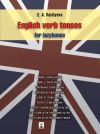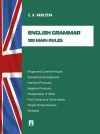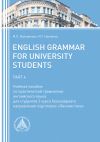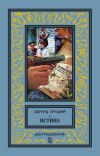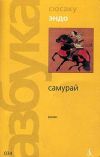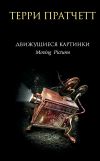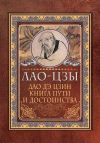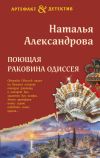Текст книги "Лексикология современного английского языка"
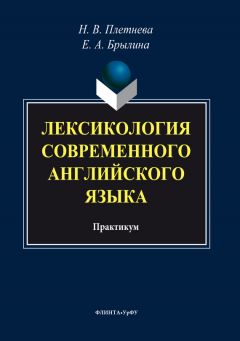
Автор книги: Коллектив авторов
Жанр: Прочая образовательная литература, Наука и Образование
сообщить о неприемлемом содержимом
Текущая страница: 1 (всего у книги 4 страниц) [доступный отрывок для чтения: 1 страниц]
Н. В. Плетнева, Е. А. Брылина
Лексикология современного английского языка: практикум
Предисловие
Курс лексикологии современного английского языка является одним из базовых курсов в программе подготовки филологов-англистов по специальности «Филология», специализация «Зарубежная филология (английский язык и литература)». Этот курс создает базу для приобретения и развития навыка обобщения наблюдаемых лингвистических явлений и прививает обучающимся навыки самостоятельного аналитического и критического отношения к фактам языка.
Цели курса – изучение основных теоретических проблем лексикологии современного английского языка и раскрытие принципов лексикологического анализа текста, что позволит студентам в дальнейшем сознательно подходить к изучению лексики английского языка как самостоятельно, так и в ряде других курсов («Литературное чтение», «Устная речь» и др.); подготовка базы для овладения специализированным языковым курсом «Стилистика английского языка».
Данный практикум предлагает последовательное изучение различных аспектов лексикологии современного английского языка посредством выполнения упражнений с опорой на теоретические знания студентов, полученные на лекциях по этому курсу.
В первом полугодии студентам-бакалаврам вычитывается базовый лекционный курс по дисциплине «Лексикология современного английского языка», предлагается выступить с собственными презентациями по предложенным темам о региональном своеобразии английского языка (специфика фонетики, грамматики, лексики) и вариантах английского языка.
Основная задача второго полугодия – научить лексикологическому анализу текста по плану, проработанному на семинарских занятиях.
Практикум включает: 8 базовых тем для семинарских занятий; план лексикологического анализа вместе с отрывками из литературных произведений английских и американских авторов для самостоятельного анализа и для работы на семинарах; вопросы к экзамену; список основной и дополнительной литературы по курсу, содержащий работы русских и зарубежных авторов.
При подготовке к семинарам студентам необходимо выполнить предтекстовые и послетекстовые задания, в которых активизируется лингвистическая терминология, уделяется внимание вопросам лексической семантики, словообразования и морфемного анализа. Авторы пособия приводят цитаты из трудов зарубежных лингвистов по изучаемой проблематике семинарских занятий и предлагают тексты лингвистического характера для обобщения знаний.
Предложенный практикум позволит студентам оптимизировать подготовку к семинарским занятиям и поможет им пройти итоговую аттестацию. Итоговая аттестация по курсу включает теоретический вопрос и лексикологический анализ текста. Практическая направленность данного учебного издания обусловливает его своеобразие и специфичность.
Seminar 1
Semasiology: Semantic structure of English words
1. Two approaches to meaning.
2. Types of meaning:
a) grammatical;
b) lexical;
c) contextual.
1
Task 1. Following is a well-known passage from Shakespeare in which the relationship word-concept-thing is clearly brought out. Can you explain it?
What’s Montague? It is not hand, nor foot,
Nor arm, nor face, nor any other part
Belonging to a man. O, be some other name!
What’s in a name? That which we call a rose
By any other name would smell as sweet:
So Romeo would, were he not Romeo call’d,
Retain that dear perfection which he owes
Without that title: Romeo, doff thy name;
And for that time, which is not part of thee,
Take all myself.
(W. Shakespeare. Romeo and Juliet)
Task 2. The English novelist E. M. Forster said once: “How can I tell what I think, till I see what I say?” How can you explain it in terms of our views on the relationship between language and thought?
Task 3. Discuss the meaning of the word in bold type in connection with the problem “concept-meaning”.
a) A house in the country. A full house (аншлаг). Every word was heard in all the parts of the house. White House. An ancient trading house in the city. A noisy cheerful house. To keep house. To bring down the house (вызвать гром аплодисментов). To leave one’s father’s house. On the house (за счет предприятия, бесплатно).
b) White clouds. White hair. A white elephant. The white race. White magic. White meat. As white as snow. White vine. It’s white of you. White lie.
2
Task 1. Discuss the following groups of words from the point of view of their meaning (denotational and connotational components).
a) Joke, jest, witticism, gag, wisecrack.
b) Fat, stout, plump.
c) Friend, crony, buddy, companion.
d) Stubborn, mulish, obstinate.
e) Abridged, shortened, epitomized.
f) Lament, mourn, deplore, grieve for.
It is very important to distinguish between the lexical meaning of the word in speech and its semantic structure in language. The meaning in speech is contextual. (“Any woman will love any man who bothers her enough”. H. Philipps.)
Polysemy does not interfere with the communicative function of the language because in every particular case the situation and context cancel all the unnecessary meanings and make the speech unambiguous.
Task 2. Analyze the following sets of sentences.
a) He bought a chair at the furniture store. He was condemned to the chair. Please address the chair. He will chair the meeting. He was appointed to the chair of philosophy at the university.
b) My father came. Father Murphy came. He was the father of the idea.
c) The horse runs. The man runs. The water runs. The tap runs. His nose runs. He ran his business well.
d) He charged the battery. He charged them to do their duty. The judge charged him with the crime.
In “Through the Looking Glass” Lewis Carroll makes Humpy Dumpy say the following:
“When I use a word it means just what I choose it to mean – neither more nor less.”
Task 3. Discuss this statement. What are its linguistic implications?
3
Task 1. Read the passage given below, make a plan and comment on it.
William BrightUniversity of Colorado
What is a Name? Reflections on Onomastics
“You are sad,” the Knight said in an anxious tone: “let me sing you a song to comfort you.”
“Is it very long?” Alice asked, for she had heard a good deal of poetry that day. “It’s long,” said the Knight, “but very, very beautiful. Everybody that hears me sing it – either it brings the tears into their eyes, or else – ” “Or else what?” said Alice, for the Knight had made a sudden pause.
“Or else it doesn’t, you know. The name of the song is called ‘Haddocks Eyes’.”
“Oh, that’s the name of the song, is it?” Alice said, trying to feel interested. “No, you don’t understand,” the Knight said, looking a little vexed. “That’s what the name is called. The name really is ‘The Aged Aged Man’.” “Then I ought to have said ‘That’s what the song is called’?” Alice corrected herself. “No, you oughtn’t: that’s quite another thing! The song is called ‘Ways and Means’: but that’s only what it’s called, you know!” “Well, what is the song, then?” said Alice, who was by this time completely bewildered.
“I was coming to that,” the Knight said. “The song really is ‘A-sitting on a gate’: and the tune’s my own invention.”
Many books and articles have taken as their title the famous line from Shakespeare’s.
Romeo and Juliet: “What’s in a name?” I choose to raise a slightly different question:
“What is a name?” – not to answer the question definitively, of course, but simply to focus attention on some aspects of the problem. In doing so, I also want to focus attention on the field of onomastics, understood as the study of names. Such study is, in fact, carried out as part of several larger fields, including linguistics, ethnography, folklore, philology, history, geography, philosophy, and literary scholarship. In Europe, especially in Germany, it is a well recognized branch of philology, as witness the three-volume encyclopedic survey of the field recently published there.
By contrast, in the US, onomastics is scarcely recognized as a scholarly field at all. To be sure, there is an organization called the American Name Society, which publishes a small journal called “Names,” but only a few linguists belong to the society, and most linguists have probably never heard of the organization or the journal. I myself have been interested in onomastics since my student days, and I have published articles in the journal “Names”; but even so, in 1992, when I edited the International Encyclopedia of Linguistics, it never occurred to me to plan for an article on names. Fortunately, the forthcoming second edition of that encyclopedia will repair my omission.
To begin with, the word name is often used to mean a term which can refer to anything, as when we say: “Banana is the name of a fruit,” or “Murder is the name of a crime.” In this sense, the word name is virtually synonymous with the word noun; indeed, in some languages, the same term can used for both, e. g., French nom. In this sense, the relationship between a name and that to which it refers has been the topic of an extensive literature written by philosophers specializing in semantics (cf. Zabeeh 1968, Lehrer 1992, Lamarque 1994). These writers have had much to say about the material in the famous quotation from Through the Looking Glass. I must admit to ignorance of this large topic, and so I will go on to more limited aspects of names and naming.
Within the general category of names, people often use the word name for what we can more precisely call proper names. Within this subdivision, it is common to distinguish two principal types. One of these is place names or toponyms; another is personal names, for which we have no commonly used term derived from Greek, but which are sometimes called anthroponyms. My discussion is limited to these two types, but it can be noted that other varieties exist, such as ethnonyms – terms referring to nationalities or ethnic groups – and glottonyms, referring to languages. An English example of both these types is Chinese, referring not only to the nationality, but also to the language that corresponds to the toponym China. It is not easy to define the term proper name (Algeo 1973). In English and some other European languages, such words often appear in writing with initial capital letters; but obviously this cannot define the term for spoken language, or for writing systems like Chinese which have no capital letters. Are there grammatical criteria to identify the proper name?
In English, it is often observed that it is unusual for proper names to occur with articles – either indefinite (a, an) or definite (the). A sentence like “The George and a Henry come from England” is hard to interpret unless someone explains that it is intended to mean “The one person in this group named George, and one of the people named Henry, come from England.”
Such usage may be made clearer by the use of spoken or written emphasis: He’s not THE George (who was King of England), he’s just A George (one of many people named George). But of course other languages have very different rules for using definite and indefinite articles; and many languages, such as Chinese, do not use articles at all. It may be that, for a universal concept of the proper name, we must seek semantic and pragmatic definitions. To put it briefly, we may say that a proper name represents a social convention for brief reference to a specific entity, as opposed to a class of persons or places. For example, George may refer to “my cousin who is legally designated as George Baker; the Bakers refers to a family of people named Baker (as contrasted with the bakers ‘the people who bake bread’)”; America may refer to “the nation which is legally and politically designated as the United States of America.”
Much more could be – and has been – said about this (cf. Lehrer 1994), but I only want to establish this simple understanding as a basis for further discussion.
As I’ve said, the types of proper names which are most often discussed are personal names and placenames. I wish to focus here, first, on a proposed characteristic of personal names, namely their universality; and second, on a frequently remarked characteristic of placenames, namely their descriptiveness. As we shall see, there is a relationship between these two topics.
Finally, at the end of this paper, I wish to point out that, in some languages, placenames may function not only as nouns, but also as adverbs. I believe that this may the case in many more languages than have been reported.
Seminar 2
Semasiology: Change of meaning
1. Causes of semantic change.
2. Nature of semantic change.
3. Results of semantic change.
Task 1. Read the following extracts and explain the semantic processes (nature) by which the italicized words acquired their meaning.
a) “Bureau”, a desk, was borrowed from French in the 17th c. In modern French it means not only the desk but also the office itself & the authority exercised by the office. Hence the familiar bureaucracy is likely to become increasingly familiar. The desk was called so because covered with bureau, a thick coarse cloth of a brown russet.
(E. Weekley. The Romance of Words)
b) An Earl of Spencer made a short overcoat fashionable for same time. An Earl of Sandwich invented a form of Light refreshment which enabled him to take a meal without leaving the card-table. Hence we have such words as spencer & sandwich in English.
(Ibid)
c) A common name for overalls & trousers is jeans. In singular jean is also a term for a durable twilled cotton & is short for the phrase Jean fustian which first appeared in texts of 16th c. Fustian is a cotton or a cotton& linen fabric, & jean is the modern spelling of Middle English Jene or Genes, The Middle English name of the Italian city Genoa, where it was made & shipped abroad.
Task 2. Define the type of transference which has taken place.
a) The wing of a bird – the wing of a building; the eye of a man – the eye of a needle; the hand of a child – the hand of a clock; the heart of a man – the heart of a matter; the bridge across a river – the bridge of a nose.
b) Green grass – green years; black shoes – black despair; glass – a glass; Ford – a Ford.
Task 3. Analyse the process of development of new meanings in italicized words.
1. I put the letter well into the mouth of the box & let it go & it fell over & over like an autumn leaf. 2. Those who had been the head of the line paused momentarily on entry & looked around curiously. 3. A cheerful-looking girl in blue jeans came up to the stairs whistling. 4. He inspired universal confidence & had an iron nerve. 5. Oh, Steven I read Dickens the other day. It was awfully funny.
Task 4. In the examples given below identify the results of semantic change.
1. While the others waited the elderly executive filled his pipe & lit it. 2. Finn was watching the birds. 3. The two girls took hold of one another, one acting gentleman, the other lady; three or more pairs immediately join them & began waltz. Smokey had followed a dictum all his life: If you want a woman to stick beside you, pick an ugly one. Ugly one stayed to slice meat & stir the gravy.
Task 5. Read the following passage from “Regularity in Semantic Change”, make a plan and comment on it.
In English there has been considerable fluctuation in the preterite and past participle ending after sonorants for weak verbs: either a voiced /-d/ or a voiceless /-t/. This has resulted in the exploitation of the two options for semantic purposes. The situation for most varieties of English today is that the ending -ed stresses the process of the verb and the ending -t emphasises the result as seen in the following examples.

POLYSEMOUS WORDS. These are words which have a basic and a related figurative meaning, e. g. foot and foot of the mountain. Characteristic for the figurative meaning is that it occurs in a phrase in which its metaphorical use is clear. But with time the secondary use may occur without any specifying information. This is the first step towards a shift from basic to figurative meaning as the unmarked member of a pair. For instance decimate formerly meant to reduce to one tenth in size (from Latin decem) but now the secondary meaning ‘to waste, destroy’ has become the primary meaning and the original basic one is lost. An example of a word which has both meanings in equilibrium would be headache which means both ‘pain in the head’ and ‘unwanted problem’ (also true of German, cf. Das bereitet mir grosse Kopfschmerzen).
DOES A LANGUAGE LOSE WORDS? The answer to this question is not simple. The clearest instance is where a word is borrowed from another language and the original word is then lost. This has happened with Old English niman (cf. German nehmen) which was replaced in Middle English by take from Norse taka. However, most loans do not lead to the replacement of native words with similar meanings. Rather they attain connotations which the native words do not possess.
There may be an instance or two where a word almost dissolves phonologically. Old English æa from an earlier *ahu (cognate with Latin aqua and represented in German by Aue) was [æ:], and would have raised to [ε:, e:, i: ] if it had continued, but it was replaced by the more substantial stream (itself from Old English) and river (a French loan in Middle English).
The more usual situation is for a language to differentiate two words semantically and for both to survive. For instance Old English fōda and mete co-existed with the meaning of what people eat. After the Middle English period the second word occurs only in the sense of ‘f lesh of animals’ and the word f lesh (< f lesc) is itself restricted to ‘human flesh’. The original meaning of mete is found in mincemeat ‘minced food’ which does not contain any meat.
THE WORDS FOR ‘MAN’. In Old English there were at least three words for ‘man’: guma, wer and mann. Only the last of these survived into Modern English. Guma ‘man’ was lost in the course of Middle English. It was formerly an independent noun and also occurred in compounds. One of these was brydguma which consisted of the words for ‘bride’ and ‘man’. With the loss of the independent form guma, it was reinterpreted in this compound as being groom, a form which still existed in English for instance with the meaning ‘someone who looks after, minds horses’. The second word wer disappeared unobtrusively and is today only found in the compound werewolf ‘man-wolf’.
ETYMOLOGY AND THE LEXICON. The development of different meanings for words automatically raises the question of whether there is an original meaning. Lay speakers tend to think there is. By ‘original’ they mean ‘oldest’. This conception of meaning is termed the etymological fallacy and states that there is an original meaning to a word if one could only go back far enough in time. But this is obviously not true. No matter how far back you trace a word there will always have been a stage before that with a probably different meaning.
LOSS OF LEXICAL TRANSPARENCY. If in the course of its development a word or part of a word becomes opaque to a later generation then its meaning may be re-interpreted in an incorrect way. Such a reinterpretation is called a folk etymology and occurs on the basis of another word or words which are similar in sound and meaning. A simple example is the German word Friedhof which was reinterpreted as ‘the place where one obtains one’s final peace’, ‘Ort des letzten Friedens’ but in fact it originally meant ‘an enclosed plot of land’, ‘der umfriedete Hof’.
Three examples from the history of English illustrate this process clearly. The Modern English word sandblind derives from Old English sam-blind which contains the element sam ‘half’ (cf. Latin semi). Whensam was lost as a word in English the compound came to be reinterpreted as meaning ‘blind from sand’.
The Modern English word shamefaced comes from Middle English schamfast with the meaning ‘firm in modesty’. When the adverb fast altered its meaning to ‘quick’ it was reinterpreted in this compound asface and the compound came to mean ‘with a face full of shame’.
A key to the phenomenon of folk etymology is that words which are similar phonetically can develop similar meanings. The example this time is a Latin loan obnoxious which originally meant ‘liable to injury’ but came to mean ‘very objectionable’, probably under the influence of the related word noxious.
(Elizabeth and Richard Traugott)
Внимание! Это не конец книги.
Если начало книги вам понравилось, то полную версию можно приобрести у нашего партнёра - распространителя легального контента. Поддержите автора!Правообладателям!
Данное произведение размещено по согласованию с ООО "ЛитРес" (20% исходного текста). Если размещение книги нарушает чьи-либо права, то сообщите об этом.Читателям!
Оплатили, но не знаете что делать дальше?

